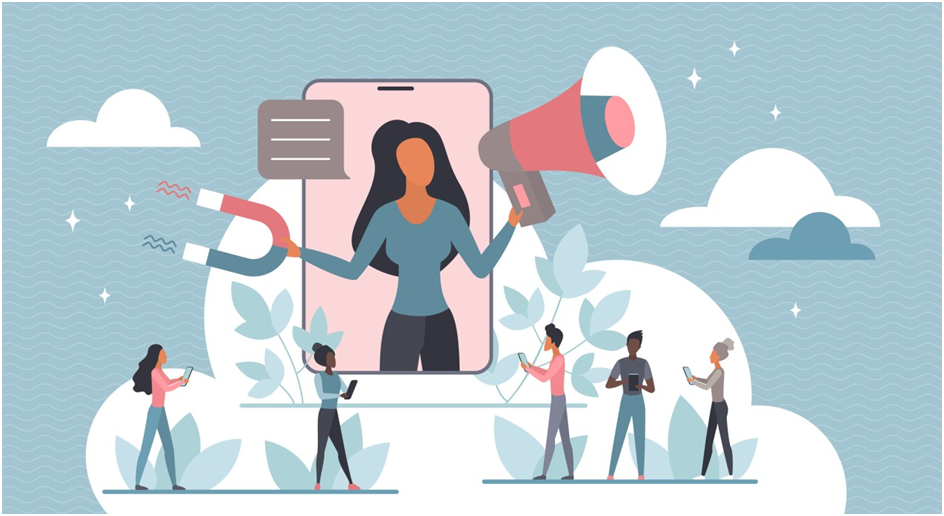Personalized Content Marketing: How to Speak to Your Audience

In today’s digital landscape, generic content no longer resonates with audiences. With an overwhelming amount of information available online, consumers expect tailored experiences that cater to their specific interests, preferences, and needs. This is where personalized content marketing comes into play.
Personalization isn’t just a marketing trend—it’s a necessity. Brands that deliver customized content see higher engagement, improved customer satisfaction, and better conversion rates. But how do you effectively implement data-driven personalization to enhance audience engagement?
Let’s explore how personalized content marketing can transform your brand’s communication strategy and create meaningful connections with your audience.
What is Personalized Content Marketing?
Personalized content marketing is the practice of creating and delivering tailored content based on audience behavior, preferences, demographics, and past interactions. Instead of using a one-size-fits-all approach, businesses use data insights to craft messages that speak directly to individual customers.
🔹Example: Instead of sending the same email to all subscribers, an e-commerce store might send product recommendations based on a customer’s browsing history or past purchases.
This level of personalization makes customers feel valued and understood, increasing their likelihood of engaging with your brand.
Why is Personalized Content Marketing Important?
✔Higher Engagement Rates – People engage more with content that feels relevant to them.
✔Improved Customer Experience – Personalized interactions make users feel recognized.
✔Better Conversion Rates – Targeted content leads to higher sales and sign-ups.
✔Stronger Brand Loyalty – Customers are more likely to return when they feel valued.
✔Enhanced Marketing Efficiency – Focuses on delivering content to the right audience at the right time.
Personalized marketing is the key to standing out in a crowded digital space. By addressing individual customer needs, businesses can build deeper relationships with their audience.
How to Implement Personalized Content Marketing
1. Understand Your Audience Through Data Collection
To create effective personalized content, you first need to know your audience. This requires gathering and analyzing data from various sources, such as:
✔Website analytics – Track user behavior and interactions.
✔Social media insights – Identify audience interests and preferences.
✔Email engagement metrics – Monitor open rates and click-through rates.
✔Customer feedback & surveys – Gain direct insights from your audience.
🔹Example: If your analytics show that visitors frequently view a specific blog topic, you can create more in-depth content on that subject to maintain engagement.
Data is the foundation of personalized marketing. The more insights you gather, the better you can tailor content to individual preferences.
2. Segment Your Audience for Targeted Messaging
Not all customers have the same interests or buying behaviors. Segmenting your audience helps you deliver content that is highly relevant to specific groups.
🔹Ways to segment your audience:
✔Demographics: Age, gender, location, profession
✔Behavioral data: Purchase history, browsing activity
✔Interests: Content preferences, past engagement
✔Customer journey stage: New visitors, repeat customers, loyal buyers
🔹Example: A fitness brand can create different content for:
- Beginners (e.g., “How to Start Your Fitness Journey”)
- Regular gym-goers (e.g., “Advanced Workout Plans for Strength Training”)
- Athletes (e.g., “Performance Nutrition for Competitive Training”)
Audience segmentation ensures that your content speaks directly to specific needs, making it more relevant and impactful.
3. Use AI & Automation for Dynamic Personalization
Advancements in AI and automation have made personalized marketing easier than ever. Businesses can now use machine learning algorithms to deliver real-time tailored content based on user behavior.
🔹Examples of AI-driven personalization:
✔Dynamic email campaigns – Personalized subject lines and product recommendations.
✔Chatbots & AI assistants – Offering instant, customized responses.
✔Content recommendations – Suggesting blog articles or videos based on past engagement.
✔Retargeting ads – Showing personalized ads to users who have previously interacted with your site.
AI-driven personalization creates a seamless, customized experience that keeps audiences engaged and coming back for more.
4. Personalize Your Website Experience
Your website is the core of your online presence. Tailoring the user experience ensures visitors find the most relevant content, improving engagement and conversions.
🔹Ways to personalize your website:
✔Custom landing pages – Display different messages based on user intent.
✔Smart content blocks – Show tailored content based on visitor behavior.
✔Product recommendations – Suggest items based on browsing history.
✔Location-based personalization – Display location-specific offers or content.
🔹Example: An online bookstore can suggest personalized book recommendations based on a user’s past purchases.
A customized website experience enhances user satisfaction and encourages longer browsing sessions.
5. Create Personalized Email Campaigns
Email marketing remains one of the most powerful tools for personalized content marketing. A well-crafted email with customized content can significantly boost engagement and conversions.
🔹Best practices for personalized email marketing:
✔Use the recipient’s name in the subject line and email body.
✔Send tailored content based on user interests.
✔Segment email lists to deliver targeted messages.
✔Offer personalized product or content recommendations.
✔Use behavior-triggered emails (e.g., cart abandonment reminders).
🔹Example: Instead of sending a generic promotional email, an e-commerce store can send a personalized discount on items left in a user’s cart.
Well-executed personalized emails can drive higher open rates, clicks, and conversions.
6. Leverage Social Media for Personalized Engagement
Social media platforms offer endless opportunities for personalization. From targeted ads to interactive content, brands can engage audiences in more meaningful ways.
🔹Ways to personalize social media interactions:
✔Use social listening tools to monitor customer interests.
✔Respond to comments and messages with customized replies.
✔Create audience-specific content (e.g., different posts for different demographics).
✔Show targeted ads based on user behavior and preferences.
🔹Example: A fashion brand could display different product ads for male and female audiences, increasing the likelihood of engagement.
Social media personalization fosters deeper connections with audiences and enhances brand loyalty.
Final Thoughts: The Power of Personalized Content Marketing
In an era where customer experience is everything, personalized content marketing is the key to success. By using data-driven insights, AI-powered tools, and audience segmentation, brands can deliver highly relevant content that truly resonates.
✔ Understand your audience through data collection.
✔ Segment users for more targeted messaging.
✔ Use AI and automation to enhance personalization.
✔ Customize website experiences for better engagement.
✔ Craft personalized email and social media campaigns.
By adopting personalized content strategies, businesses can boost engagement, improve customer satisfaction, and drive conversions like never before.





